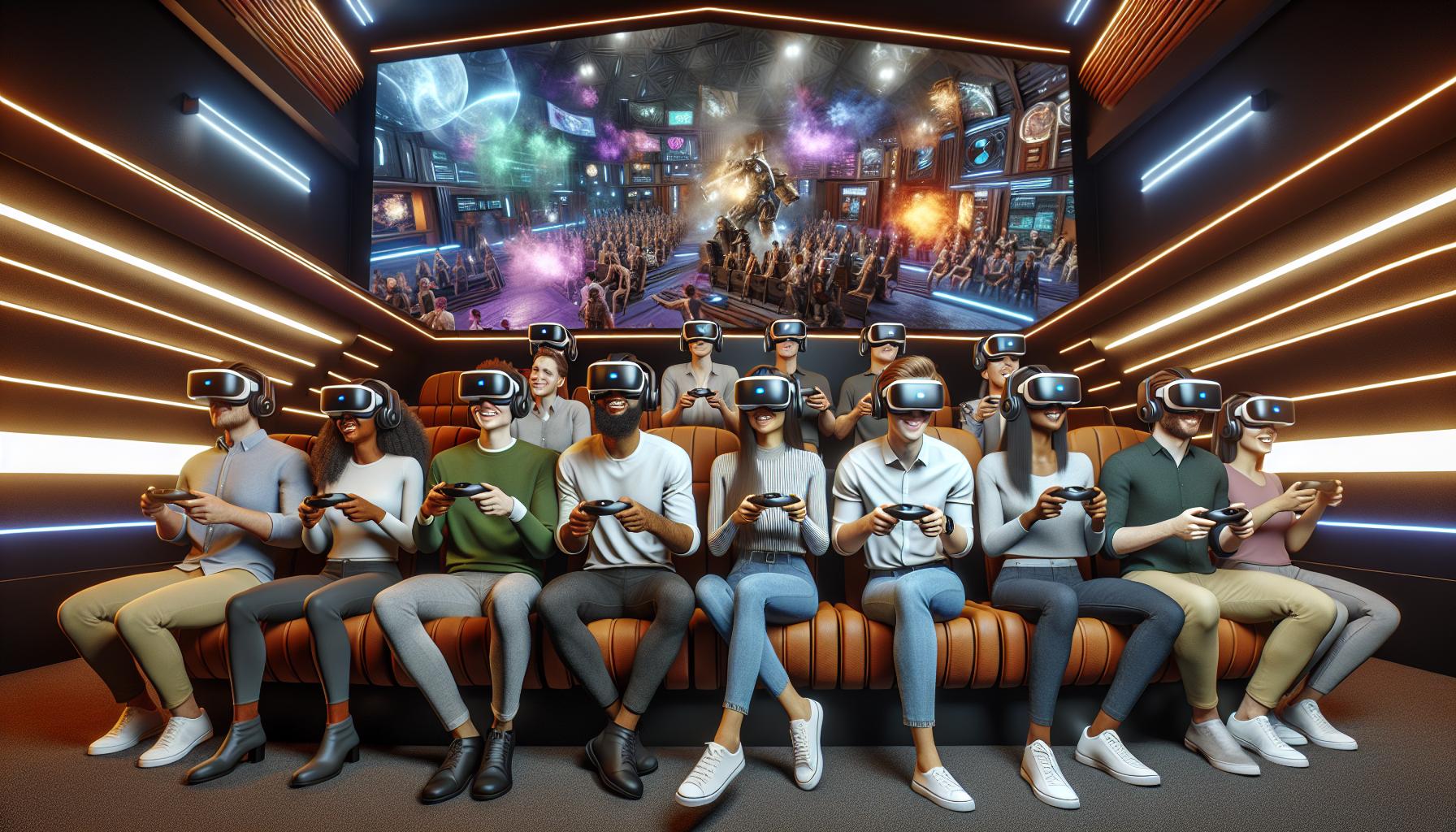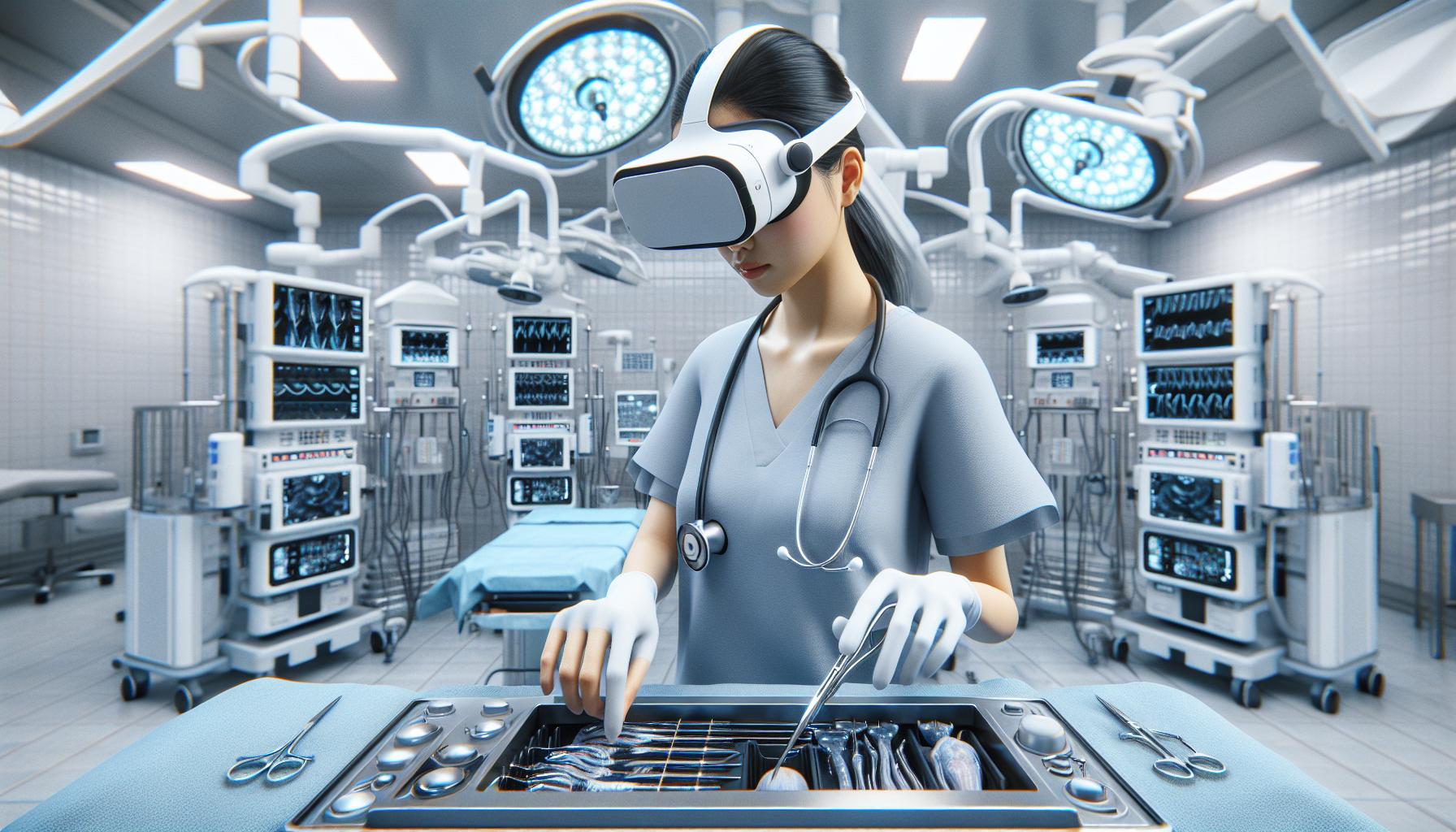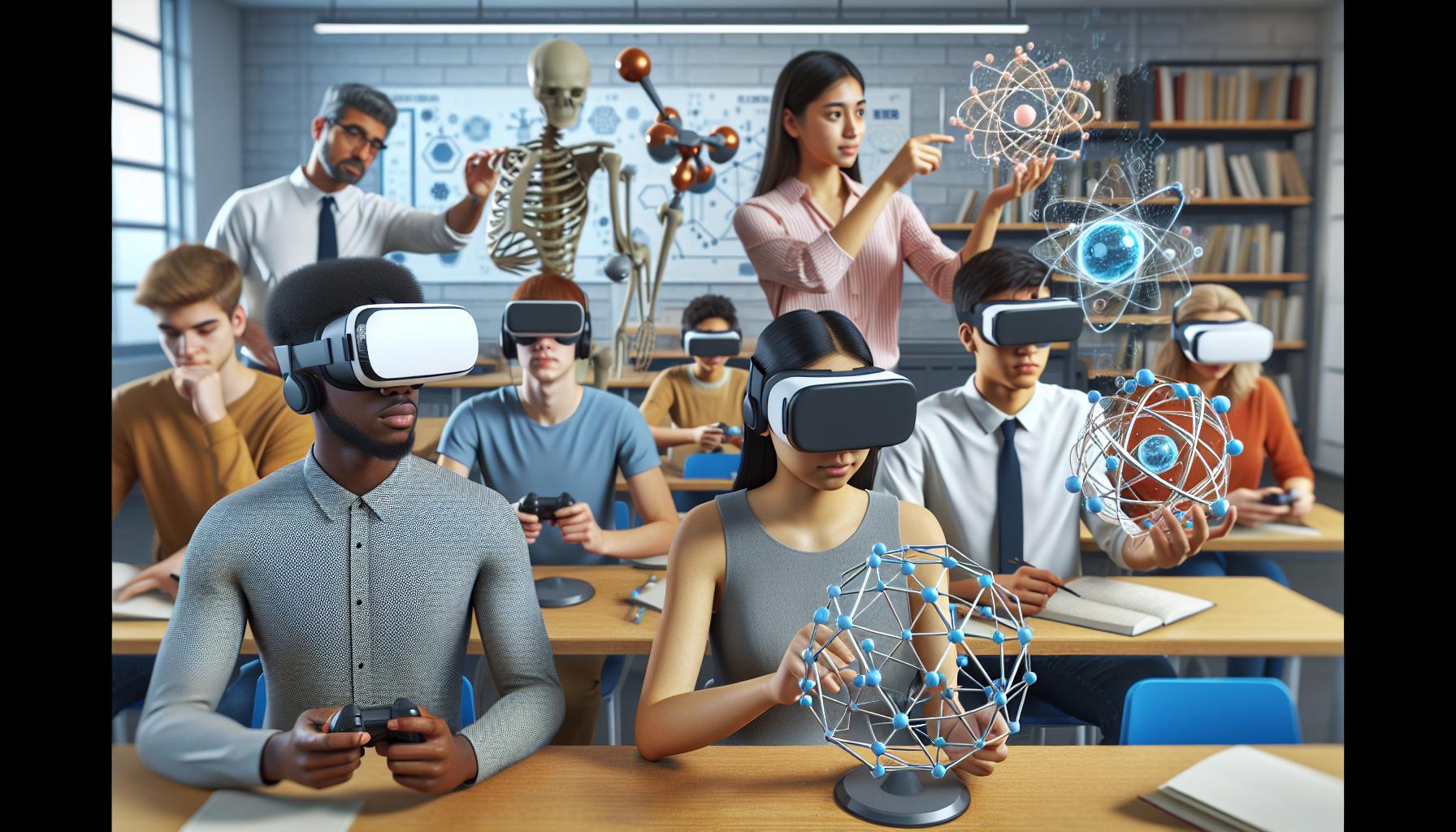Virtual reality isn’t just about playing games and pretending to be a space warrior anymore. This groundbreaking technology has evolved far beyond its entertainment roots to revolutionize countless industries and transform how people live, work and learn.
From helping surgeons practice complex procedures to enabling architects to walk clients through buildings that don’t exist yet, VR’s applications seem limitless. It’s reshaping education by taking students on virtual field trips to ancient civilizations and training workers in safe, simulated environments. The technology has even found its way into therapy sessions, helping people overcome phobias and PTSD through controlled exposure in a virtual world.
What Can Virtual Reality Be Used For
Virtual reality technology creates immersive digital environments that users experience through specialized hardware. The technology combines advanced display systems software processing power to generate realistic 3D worlds.
Key Components of VR Systems
Modern VR systems consist of five essential components for creating immersive experiences:
- Head-Mounted Displays (HMDs): High-resolution screens positioned close to the eyes display stereoscopic 3D content
- Motion Sensors: Gyroscopes accelerometers track head position orientation in real-time
- Input Controllers: Hand-held devices enable natural interaction with virtual objects gestures
- Processing Units: Powerful computers or dedicated processors render complex 3D graphics in real-time
- Spatial Audio Systems: 3D positional sound creates directional audio cues matching visual environment
How Virtual Reality Works
VR systems operate through a continuous process of sensing rendering display:
- Motion tracking sensors capture user movements at 90+ times per second
- Graphics processors generate corresponding 3D imagery for each eye
- Displays present separate images creating stereoscopic depth perception
- Software adjusts imagery based on head position minimizing latency
- Positional audio syncs with visual elements enhancing immersion
- Low motion-to-photon latency (<20 milliseconds)
- High refresh rates (90+ Hz)
- Wide field of view (90-110 degrees)
- Sub-millimeter tracking precision
Gaming and Entertainment Applications

Virtual reality transforms traditional entertainment into immersive experiences through advanced digital environments. The technology creates new possibilities for gaming interactive media consumption.
Immersive Gaming Experiences
Virtual reality gaming transports players directly into digital worlds through 360-degree environments. Players interact with game elements using motion-tracked controllers that replicate natural hand movements. Popular VR games like “Half-Life: Alyx” integrate physics-based interactions, allowing users to grab manipulate virtual objects realistically. Multiplayer VR platforms such as “VRChat” connect players in shared virtual spaces where they communicate through full-body avatars. The technology supports various gaming genres including:
- First-person shooters with precise aim tracking
- Racing simulations with virtual cockpits
- Sports games featuring full-body movement
- Adventure titles with interactive puzzle solving
- Social platforms for multiplayer interactions
Virtual Cinema and Live Events
VR platforms revolutionize entertainment consumption by creating virtual venues for media viewing social gatherings. Platforms like “Bigscreen VR” enable users to watch movies in customizable virtual theaters with friends from different locations. Live events gain new dimensions through VR broadcasting:
- Concerts with virtual front-row experiences
- Sports matches with 360-degree viewing angles
- Theater performances with dynamic viewing positions
- Music festivals with interactive social features
- Art exhibitions with virtual gallery spaces
These applications utilize spatial audio real-time rendering to create authentic viewing environments. Users experience events through customizable virtual seats while interacting with other attendees through voice chat avatar movements.
Healthcare and Medical Training

Virtual reality revolutionizes healthcare by providing immersive training environments for medical professionals. VR applications in healthcare span from surgical simulations to therapeutic interventions, transforming patient care delivery.
Surgical Simulations
Medical students practice complex procedures through VR surgical simulators that replicate realistic operating room scenarios. These platforms incorporate haptic feedback systems to simulate tissue resistance during virtual operations. Advanced VR systems track hand movements with sub-millimeter precision, enabling surgeons to perfect techniques without risk to patients. Programs like Osso VR deliver detailed anatomical models for orthopedic surgical training, while platforms such as Touch Surgery offer step-by-step guidance for various procedures. Medical institutions report a 230% improvement in surgical performance accuracy when VR training supplements traditional methods.
Therapy and Rehabilitation
VR therapy applications create controlled environments for treating psychological conditions including anxiety disorders phobias PTSD. Patients engage in exposure therapy through customizable virtual scenarios that gradually increase in intensity. Physical rehabilitation programs utilize VR to gamify recovery exercises, improving patient engagement rates by 40%. Platforms like MindMaze combine neuroscience with VR to aid stroke recovery through targeted movement exercises. Virtual environments enable therapists to monitor patient progress in real-time, adjusting treatment protocols based on quantitative performance data. Recovery centers integrate VR systems to help patients regain motor functions through repetitive task training in engaging virtual settings.
Education and Skill Development

Virtual reality transforms traditional education into interactive learning experiences through immersive digital environments. VR technology enables students to engage with complex concepts through hands-on interaction while providing educators with innovative teaching tools.
Virtual Classrooms
Virtual reality classrooms create interactive learning spaces where students connect from any location. These digital environments support 3D models visualization tables displays of molecular structures chemical reactions astronomical phenomena. Students manipulate objects in real time examining them from multiple angles gaining deeper understanding of abstract concepts. Leading platforms like ClassVR report 82% increase in student engagement when using VR for learning. Teachers monitor student progress track participation customize lesson content based on individual needs. Virtual field trips transport classes to historical sites museums scientific laboratories expanding learning beyond physical classroom walls.
Hands-on Training Programs
VR training programs deliver practical skills development through simulated real world scenarios. Manufacturing workers practice assembly procedures maintenance routines safety protocols in risk free environments. Aviation students complete flight training exercises using cockpit simulators that replicate actual aircraft controls weather conditions emergency situations. Medical training programs enable practice of surgical procedures patient consultations emergency response protocols with detailed anatomical models. Organizations implementing VR training report 40% reduction in training time 75% improvement in knowledge retention compared to traditional methods. The automotive industry uses VR to train technicians on new vehicle models reducing equipment damage costs by 30%.
Business and Professional Uses
Virtual reality transforms traditional business operations through immersive digital solutions. Companies leverage VR technology to enhance productivity, reduce costs and streamline workflows across departments.
Virtual Meetings and Collaboration
Virtual reality platforms create interactive meeting spaces where remote teams connect in shared 3D environments. Platforms like Spatial and Mozilla Hubs enable participants to collaborate on projects using digital whiteboards, 3D models and shared documents. Users interact with virtual objects, manipulate data visualizations and engage in spatial audio conversations. Meeting productivity increases by 25% when teams utilize VR collaboration tools compared to video conferencing. Global organizations reduce travel expenses by 30% through VR meetings while maintaining effective communication across distributed teams.
Architecture and Design Visualization
Architects and designers use VR to create interactive walkthroughs of unbuilt spaces for clients and stakeholders. Software like Enscape and Twinmotion render photorealistic 3D environments that showcase lighting, materials and spatial relationships in real-time. Clients experience designs at true scale, identifying potential issues before construction begins. Architecture firms report 40% faster client approval processes using VR visualization tools. Design iterations decrease by 60% as stakeholders provide immediate feedback during immersive presentations. The technology enables remote design reviews, reducing travel requirements while maintaining project momentum.
Military and Defense Applications
Virtual reality transforms military training and strategic operations through immersive simulations and interactive planning tools. VR technology creates realistic combat scenarios and strategic environments that enhance military preparedness while reducing training costs.
Combat Training Simulations
Military personnel experience lifelike combat scenarios through VR training programs that replicate battlefield conditions. These simulations incorporate realistic weapon handling, tactical movements and squad-based operations in virtual environments. Advanced haptic feedback systems provide physical sensations during training exercises, enhancing muscle memory development. The U.S. Army’s Synthetic Training Environment (STE) program demonstrates a 45% improvement in soldier performance through VR-based training. Virtual scenarios include urban warfare, desert operations and maritime missions, allowing personnel to practice diverse combat situations without physical risk. Multi-user capabilities enable squad-level training exercises with up to 32 simultaneous participants across different locations.
Strategic Planning Tools
Military commanders utilize VR platforms to visualize battlefields and analyze tactical scenarios in real-time. Interactive 3D maps display terrain features, troop positions and environmental conditions with precise detail. The Defense Advanced Research Projects Agency (DARPA) reports a 60% increase in strategic decision-making accuracy using VR planning tools. Command centers integrate live data feeds with virtual environments to create dynamic battlefield representations. Strategic planning applications support multiple command levels, from squad tactics to theater-wide operations. VR systems enable remote collaboration between command units, reducing response times by 35% during mission planning exercises. Commanders manipulate virtual assets to test different strategic approaches and evaluate potential outcomes before deployment.
Future Potential of Virtual Reality
Virtual reality technology expands into diverse sectors, creating innovative solutions for complex challenges. The technology’s advancement opens new possibilities for human interaction, work processes, and technological integration.
Emerging Use Cases
Virtual reality integration extends into urban planning through digital city mapping simulations. Smart cities leverage VR for traffic management systems, reducing congestion by 35% in pilot programs. Environmental scientists utilize VR for climate modeling, creating interactive visualizations of weather patterns and ecological changes. The technology transforms criminal justice systems with virtual crime scene reconstructions, increasing investigation accuracy by 40%. Social platforms evolve into metaverse environments, connecting millions through persistent virtual worlds. Industrial manufacturing adopts VR for quality control processes, cutting defect rates by 25%. Agricultural sectors implement VR for precision farming, optimizing crop yields through 3D terrain mapping and automated equipment training.
Technology Advancements
Next-generation VR hardware introduces haptic feedback systems that simulate physical touch sensations. Advanced eye-tracking technology enables foveated rendering, reducing processing requirements by 60%. Wireless VR headsets achieve ultra-low latency of 5 milliseconds through edge computing integration. Artificial intelligence enhances virtual environments with dynamic content generation and real-time language translation. Neural interface technology creates direct brain-computer connections for intuitive VR control. Resolution improvements reach human-eye equivalent clarity at 16K per eye. 5G networks enable cloud-rendered VR experiences, eliminating the need for powerful local hardware. Quantum computing integration processes complex physics simulations in real-time, creating more realistic virtual environments.
VR and Its Uses
Virtual reality stands at the forefront of technological innovation transforming numerous sectors beyond its gaming origins. From revolutionizing healthcare and education to enhancing military training and business operations VR continues to break new ground in how we interact with digital environments.
As technology advances with improved haptics AI integration and 5G connectivity VR’s potential seems boundless. Its ability to create immersive experiences while reducing costs and improving efficiency makes it an invaluable tool for industries worldwide.
The future of VR promises even more exciting developments that will reshape how we live work and connect with others. This technology has proven itself not just as an entertainment platform but as a powerful solution for real-world challenges across every sector of society.



